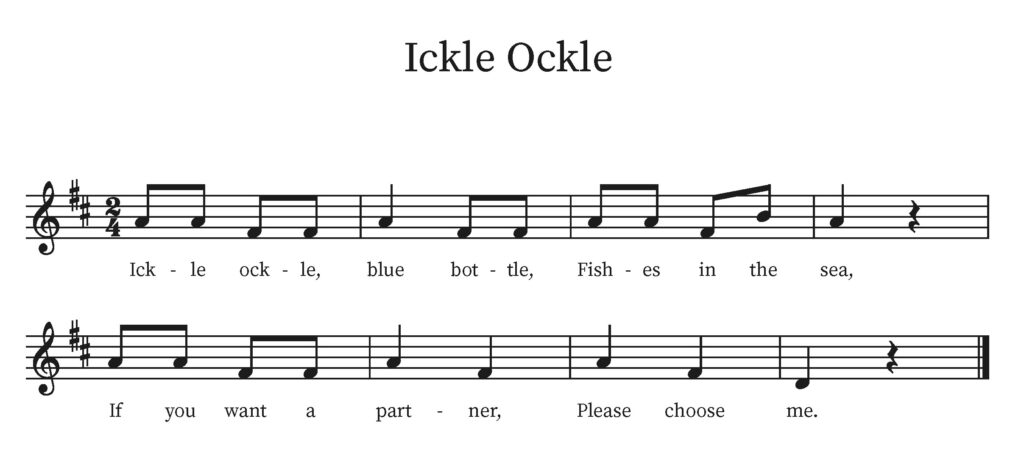Ickle Ockle is a simple song for teaching do and quarter rest. The accompanying game is great for helping students learn how to play games in which they have to choose a classmate. Because so many games require choosing partners, it’s helpful to establish the expectations for those games early on in the school year.

CIRCLE GAME
- Students stand in a circle with one in the middle as “it”
- “it” taps students heads to the beat of the song as they walk around the circle
- The student that is tapped on the word “me” becomes “it” and the game continues
This song is a great way to assess each students’ beat-keeping skills, because they will have to keep every beat, including that sneaky quarter rest in the middle of the song!
IDEAS TO MIX IT UP
- Have students pat their legs as they sing the song. When they get to the quarter rest, have them place their finger to their lips.
- Pass out a rhythm instrument to each student in the circle. They’ll play that instrument to the beat, being sure to stay silent for the rest.
- Have half the class pat the beat on their legs, while the other half claps the rhythm.
- Scatter hula hoops around the classroom. Have students jump in and out of them to the steady beat of the song.
- Create a passing game with a small, inflatable, beach ball. Whoever ends up with the ball at the end of the song, leaves the circle to start another.
- Have students choose partners and create a simple clapping game with the rhythm. Example: students pat each others’ hands on the eighth notes, pat their legs on the quarter notes, and put their hands on their shoulders during the quarter rests.
FREE RESOURCE
Download, then project the PDF below onto your whiteboard. You can project the filled out practice sheet or have students fill in the pitches and rhythms on the blank sheet. Have students take turns going to the board and using a fun pointer to keep the beat as the rest of the class sings. You can also have your students play along with colored percussion instruments (such as Boomwhackers™) since the pitches are color-coded to match.
